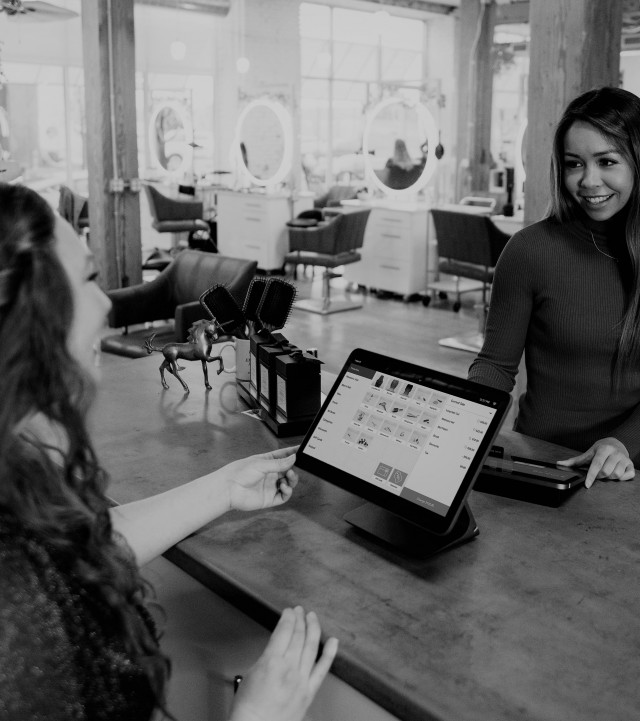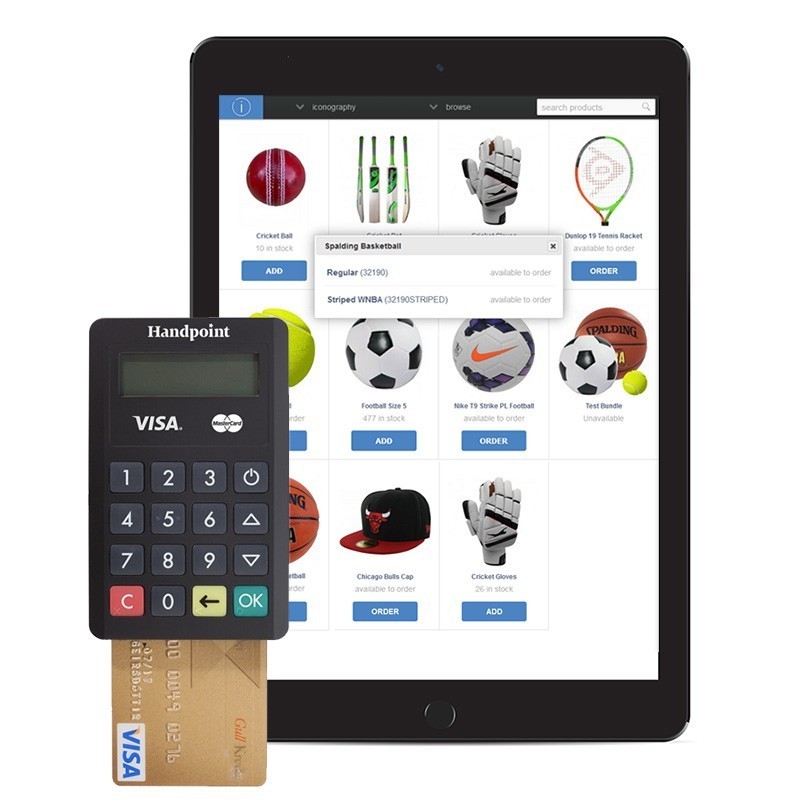Omnichannel strategy guidelines for retailers
What is an omnichannel retail strategy?
An omnichannel retail strategy is where a business seeks to provide a consistent experience for customers wherever they choose to interact with the vendor. Therefore a dominant feature of an omnichannel strategy is putting the customer at the centre of activity and creating a frictionless process for product discovery and conversion to order.
A fundamental focus for omnichannel retailing is integrating stores, eCommerce, mobile apps and social media. The motivation for implementing an omnichannel retail strategy is the evidence for higher customer engagement and retention rates, increased average order values and a higher frequency of repeat purchasing.
OMNIS by Iconography
Did you know that our Unified Commerce platform mixes eCommerce, RMS, CRM and EPoS to provide an award winning omnichannel solution?
Who is omnichannel retailing for?
Omnichannel retailing is an approach that seeks to fine-tune and improve the returns from investing in connecting with customers across multiple channels and touchpoints. Therefore, its value comes from improving on what most retailers and eCommerce vendors are already doing. As such, an omnichannel strategy is for every business.
For instance, an omnichannel strategy is suitable for the successful D2C business looking to expand with a physical retail outlet (store, concession, trade counter, pop up or showroom).
Similarly, an omnichannel strategy is just as relevant for established retailers that know problematic integrations between eCommerce, stores, and head office systems are causing serious customer satisfaction issues.
Some established retailers with outdated legacy systems will herald a new approach to retail management systems that are not reliant on integrations. Digital-first retailers looking to extend their touchpoints to include in-person sales instinctively know the importance of integrating each channel to support the other.
What is an omnichannel customer experience?
Today, shoppers have a mobile and web-first mindset. Most consumers use smartphones as the starting point for their product or service search. After first contact, there will be at least two more touchpoints where customers interact with websites or social media channels before they purchase. And with more smart devices like fridges, cars, watches etc. the number of touchpoints is increasing.
As the omnichannel customer experience evolves, so must the omnichannel retail strategy. And when customers discover and order products through different channels, they expect a unified and consistent experience. This means there is no online versus offline.
Your messaging and retail management systems must be unified. For instance, a customer purchase needs to access a single accurate stock position across your channels. Delivering the omnichannel customer experience means their selections and preferences are recognisable regardless of channel.
Creating an omnichannel strategy - 6 top tips
1) Goal setting, research and analysis
Setting goals for an omnichannel strategy comes from a thorough assessment of where your business is now in relation to what else is going on. Conduct a classic SWOT analysis of the internal business strengths and weaknesses, and get an actual review of the external opportunities and threats.
In other words, consider carefully what you know about customers and how you engage with them. After that, scrutinise competitor websites and social media activity as well as their offline marketing profile. Map customer buying habits and behaviours. Look out for best or innovative practice and define for yourself what a successful omnichannel retail strategy looks like.

2) Align omnichannel with your overall business objectives
The research stage will help you to understand and define the omnichannel customer experience you want to deliver. After that, you can then set your aims and objectives accordingly. It may not be as simple as doing more of the same with some variations.
You need to evaluate how the new omnichannel strategy will impact your existing business model. What needs to change? For instance, will new staff be required? What about branding and messaging? Will you need to revisit existing contracts and pricing agreements?
Aligning the old with the new is fundamental to managing the risk and reward of moving to omnichannel retailing. It follows that the results should be about business growth and development.
3) Choose an appropriate D2C model
If you've done the research work on customer behaviours and touchpoints, you’ll have a good idea of what the emphasis needs to be. This will define the core technology capabilities required to support omnichannel retailing and a scalable D2C model.
For example, you might be upgrading or adding new eCommerce websites to an existing online presence. It could be you’re extending out from successful online sales into physical stores, pop-ups or concessions. Or you might want to be doing more through marketplaces or social media selling.
Depending on how these priorities across trading channels present themselves, these factors determine the levels of customer personalisation and shopability. Above all, use the information to inform an investment budget based on revenue and profit growth, increased media costs, and customer acquisition costs.

4) Evolve your operations to cater for your new D2C sales
Consider how much of a change delivering omnichannel retailing means for your operational business structure. Very often, the adoption of new technologies and systems can drive positive organisational change. For instance, you may already have customer service teams in place. But to deliver the omnichannel customer experience requires new processes and workflows.
If you have existing wholesale customers and marketplace listings, you may need to refashion them in line with the new omnichannel strategy. For instance, inventory and order management are critical in consistently delivering the frictionless omnichannel customer experience. Similarly, consideration of how and where to process returns is vital.
5) Engage a D2C software company to set up new D2C channels
Succeeding in omnichannel retailing means making suitable investments in systems that allow a single view of the customer, inventory, and orders so that you can deliver the end-to-end experience customers expect. In the 2020s, this is no longer a competitive advantage but a fundamental requirement to thrive.
Implementing software that focuses specifically on addressing the challenges of omnichannel D2C is essential. Poor software choices lead to higher operational costs through wasted time, unnecessary user licences, technical support fees and lost orders. You can't do omnichannel retailing with software unable to cope with the demands of delivering an omnichannel customer experience. It will hinder your D2C efforts and ultimately harm your business.

6) Launch D2C website or physical outlet
With the right omnichannel platform and functionality in place and the onboarding process complete, you’re ready to launch your omnichannel customer experience. Your omnichannel strategy review will have provided you with the right targets and segments. Your cross-channel value proposition is signed off. All your product and service descriptions are freshly written for maximum relevance to customers and SEO robots.
Training of all staff, old and new, will be complete and new processes for inventory management, order fulfilment, click and collect, and returns will be rehearsed and ready. New tech support options are installed in-store. Mobile access to ePOS is sorted for pop-ups and concessions. The chatbot is primed and ready to provide instant answers to online questions. Social media monitoring is in place. Digital and conventional marketing is activated.
Good omnichannel experiences increase ongoing revenue
Three takeaways for creating an omnichannel strategy
The omnichannel approach is open to all types of companies who sell products and services to customers. And because it’s most likely a development of existing strategies and tactics, the chances are it can be an evolution, not a revolution.
Fundamental to the successful implementation of an omnichannel retail strategy requires the right software and systems decisions. Get this right, and you can eliminate long-standing issues and inefficiencies. Say goodbye to double-data entry, integration issues, process bottlenecks and outdated, inaccurate stock figures.
Delivering the omnichannel retail experience does require a new way of thinking and working. New systems, processes and staff will require an investment of time and money. However, the resulting improvements in customer engagement and retention rates, increased average order values and a higher frequency of repeat purchasing should more than justify the effort.
We are Iconography
OMNIS Retail is a pioneering new retail solution driven by D2C brands & niche retailers looking to the future. A single database eliminates any data integration issues between outdated systems, providing a cloud-based multi-channel retail solution fit for the 21st century.
OMNIS Retail
OMNIS was born out of the needs of a leading direct to consumer brand to support their online and instore retailing formats in the UK market. They were facing the same problems and challenges that present obstacles for any retailer.
As a progressive and forwarding thinking brand, our client wanted to remove the limitations, constraints and operational inefficiencies associated with integrating an eCommerce website with offline EPoS and legacy back office retail software.
We quickly saw the vast potential OMNIS possessed. It’s a need we’ve recognised with many other retailers and DTC brands that have similar aspirations and want to remove the restrictions of old retail technology and software.
In OMNIS you can create multiple warehouses with any number of locations, place purchase orders and complete stock transfers. We have a full range of reporting and administrative control suite. Together, these give you complete control and oversight over your stock across all channels.


Online and instore retail
OMNIS Retail is a pioneering new retail solution that has been driven by D2C brands & niche retailers looking to the future. A single database eliminates any data integration issues between outdated systems, instead providing a cloud-based omnicommerce retail solution fit for the 21st century.
Everyone is super helpful all the time, always helping us understand what we need to do and what we are asking you to do.
Natalie Lewis, Washware Essentials
Get in Touch